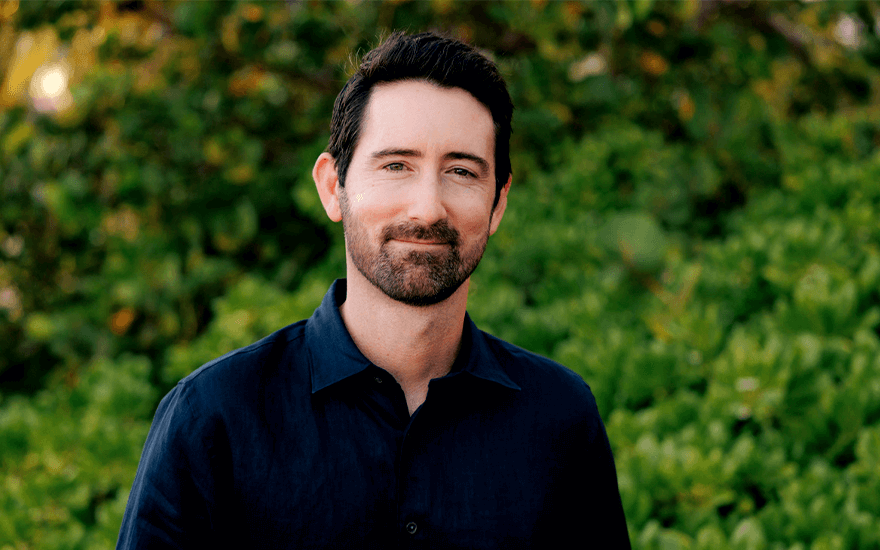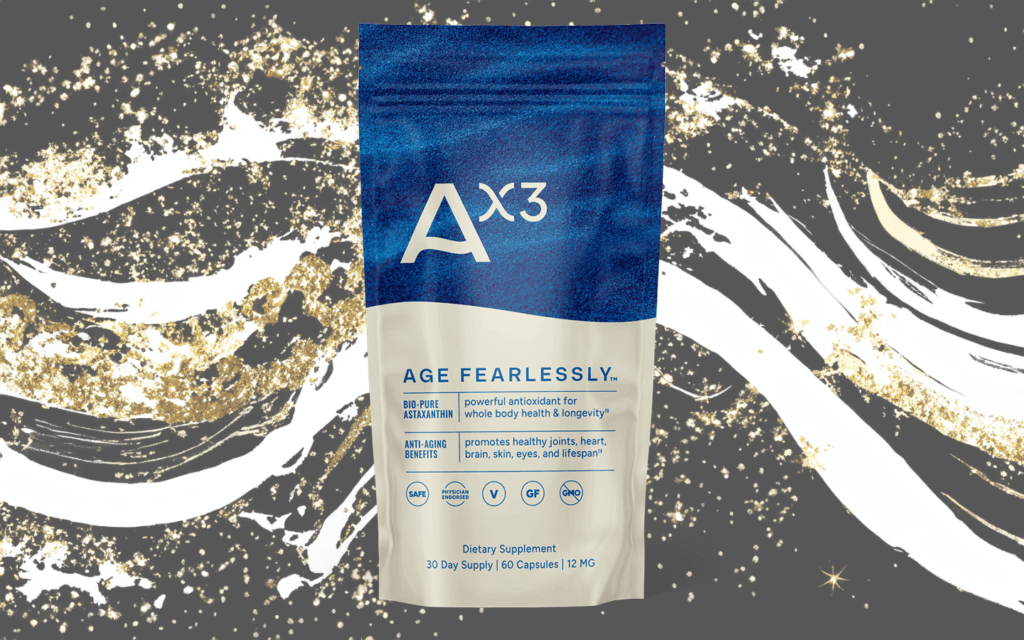Imagine popping into your local pharmacy and purchasing a life-prolonging dietary supplement over the counter.
This may sound ridiculous, infeasible—and meandering into dream territory—but the reality is far more tangible.
That’s down to the work of AX3 Life—a company based in the stunning capital of Hawaii, Honolulu—who’ve made a significant discovery in life extension, as revealed in a press release in December 2023.
Their longevity supplement, AX3® Bio-Pure Astaxanthin, is a groundbreaking solution that effectively fights inflammation and other signs of aging—leading to improved lifespan as well as healthspan.
AX3® Bio-Pure Astaxanthin has been a long time in the making for co-founders David and Dave Watumull, over 25 years, to be more precise.
Research on astaxanthin has witnessed a significant increase since the pair began to study the naturally occurring supernutrient in the late 1990s.
More than 3,000 peer-reviewed papers have been published on astaxanthin, and its safety as well as efficacy have been studied in more than 50 human clinical studies and hundreds of animal studies.
You might be hearing a lot more about astaxanthin soon.
It’s what gives salmon and lobsters their reddish color and flamingo feathers their pink hue. But how has it been developed and used to form AX3® Bio-Pure Astaxanthin?

Muscle and Health spoke to one-half of the brains behind AX3, Dave Watumull, to get a complete insight into the product’s inception, the mind-bending science behind it, and the plans for AX3 moving forward.
We’ve done lots of research and background work on AX3, but we still want to learn a lot more. Has this been your life’s work?
“Yes, it’s been a journey of almost 20-plus years. The idea for this product came about in the late nineties when I was working with a company with technology to grow microalgae.
It turns out that microalgae produce this molecule called Ain, which is a defense mechanism against UV light. It’s essential for salmon and other crustaceans.
So, why not try to harvest and commercialize this molecule? We were initially focused on its coloring properties but soon realized it had more benefits.”
That’s interesting. So, you decided to create a human dietary supplement based on the science and research available then?
“Yes, back in 2000, we launched the supplement but faced challenges producing the microalgae. So we shifted to natural product total synthesis, which allowed us to create the molecule with absolute purity and consistency.”
That’s impressive. Did you further study how the molecule works?
“We collaborated with researchers at Harvard to understand how the molecule interacts with cell membranes. It anchors across the membrane without disrupting it, making it perfect for stabilizing and scavenging free radicals.
Increased oxidative stress can happen as we age or face various factors like infections or dietary issues. Our molecule helps mitigate that and reduces damage to DNA and mitochondrial Health.

We continued to explore its mechanism of action and its role as an antioxidant and anti-inflammatory agent, and then we also looked at what type of downstream things it hit.
Also, we honed in on things like cardiovascular damage in various models. We looked at clots in the arteries of animals, both rodents and canines, looking at primary and secondary inclusion of arteries like strokes to see if you could impact that.
This is something we pursued for many years and explored the pharmaceutical pathway, which is a very cost-intensive long-term route.
We made some progress in that route, but ultimately, we continued to pursue the dietary supplement pathway because it was just more feasible to bring the product to market.”
Several years ago, you brought out a dietary supplement piloted in Hawaii. What was the story behind that?
“We worked with many local doctors, and they were impressed with the science because they use anti-inflammatories, like corticosteroids and aspirin, in particular, within their practices.
Of course, they all have side effects. These drugs impact inflammation and are not suitable for chronic use. We went to them and said, ‘Hey, look, we have this fantastic science with this naturally occurring molecule.’
First of all, it’s super safe. You don’t have to worry about causing harm to your patients, but this can help them with their cardiovascular Health and joint Health because it is this antioxidant.
It has these anti-inflammatory health benefits, so they started utilizing it in their practices, and that was our initial market

The local GNC stores—nutritional stores in Hawaii—started carrying the product before we went national in the US, soon becoming the top-selling product in their antioxidant category.”
How much did the pandemic affect the product?
“It blew things up at GNC. People weren’t going to doctors, and we couldn’t connect with professionals, set up meetings, or conduct seminars.
So we need to build a community around this molecule based on this concept.
Throughout the pandemic, we tried to pivot and start fresh. We wanted to build a company and community around the brand and product.
That was the catalyst for AX3.
Over the next several years and decades, we hope AX3 becomes much more of a mainstream product that people associate with longevity and health, just like they do with other common types of things like Omega 3 and multivitamins.”
Is it too simplistic to classify AX3 as an anti-ageing product?
“Yes, it’s an anti-ageing or longevity product. But it depends on how you define aging and longevity.
Some people think of longevity as just living longer. Data shows increased lifespan in yeast, fruit flies, and roundworms. A recent publication working with the National Institutes of Health showed increased lifespan in mice.
The National Institutes of Health runs the intervention testing program conducted at three different institutions. They use specially bred mice that are more similar to humans. Studying human lifespan is not feasible, so they use mice as a model.
The program selects promising longevity agents each year and feeds them to the mice, following them throughout their lives. Our molecule was selected based on previous research showing its impact on aging genes.
We have also demonstrated the activation of anti-ageing genes in mice and a 12% increase in lifespan in the mice model. This 12% increase is significant compared to other interventions showing a 3% increase in lifespan.
The increase was more pronounced in males, as females already have a longer lifespan. But, there have been demonstrated health benefits for both males and females.
We’re the first agent in their program in the last 20 years to show results greater than 10% increase in lifespan, that’s also exceptionally safe for chronic use and available commercially over the counter as a dietary supplement.”
That sounds like some groundbreaking research and a scientific breakthrough! So it’s about the quality of life, not just the length?
“When you take the overall body of evidence, it’s compelling. On top of all the safety data that’s been demonstrated, there’s also the health span aspect of aging, where it’s not only how long you live, but you know how long you live in a healthy state.

It’s about the quality of life, being able to do what you want and hopefully live as long as you can, then dropping. That’d be the ideal way versus the slow decline where it’s horrible.
We’ve demonstrated benefits with cardiovascular health, liver health, cognitive health, joint health, and muscle health—and the reason it has all these benefits is not that it does a million things all over the place—but that it impacts these fundamental mechanisms in your cells.
It’s just naturally distributed throughout your whole body, so it gets into the cells in your heart, liver, and brain.
The product gets to all these places and deals with this oxidative stress and inflammation that would otherwise wreak havoc and manifest itself as different issues in different places.
From a true anti-ageing or longevity product, it’s the complete package.”
Is there a specific target audience for AX3?
“From a safety standpoint, nothing indicates that anyone of any age shouldn’t take it. We don’t specifically market it to children, but I don’t know any scientific reason why a child couldn’t take it.
There have been safety studies on animals where mothers consumed the product, and then the health and development of their offspring were examined—and no issues were found.
People in middle age and older age would benefit the most. However, it’s always easier to maintain something than fix it afterwards. It would also make sense for younger adults who want to keep their health and prevent age-related decline.
The target demographic would likely be people in their thirties, forties, and fifties who are starting to experience aging. But, even older individuals could benefit from it.
It’s hard to pinpoint a specific demographic because everyone experiences oxidative stress and inflammation as they age. This supplement, like a multivitamin or omega 3, could benefit virtually everyone.
It would benefit virtually everyone and aligns with the current focus on health among younger adults.”






